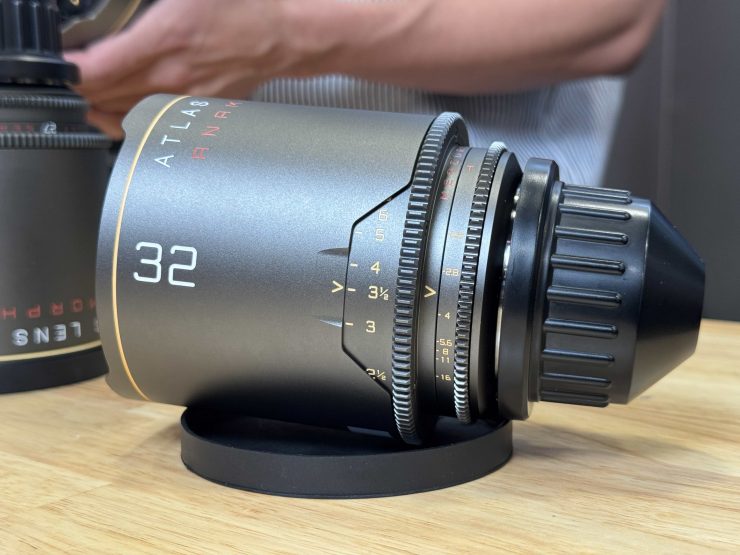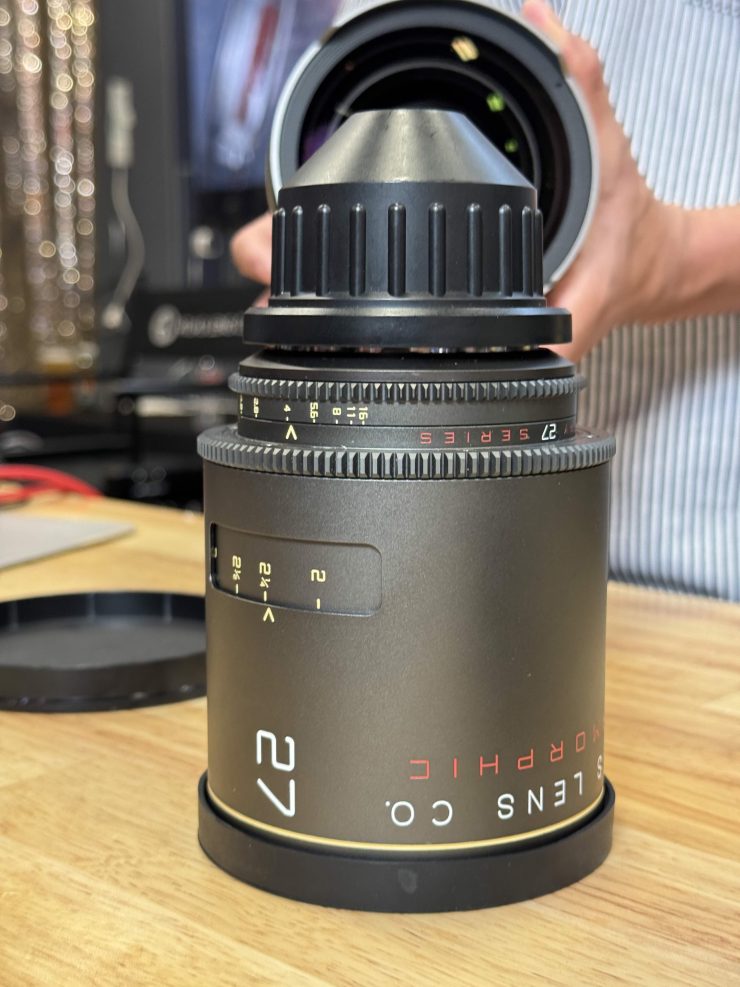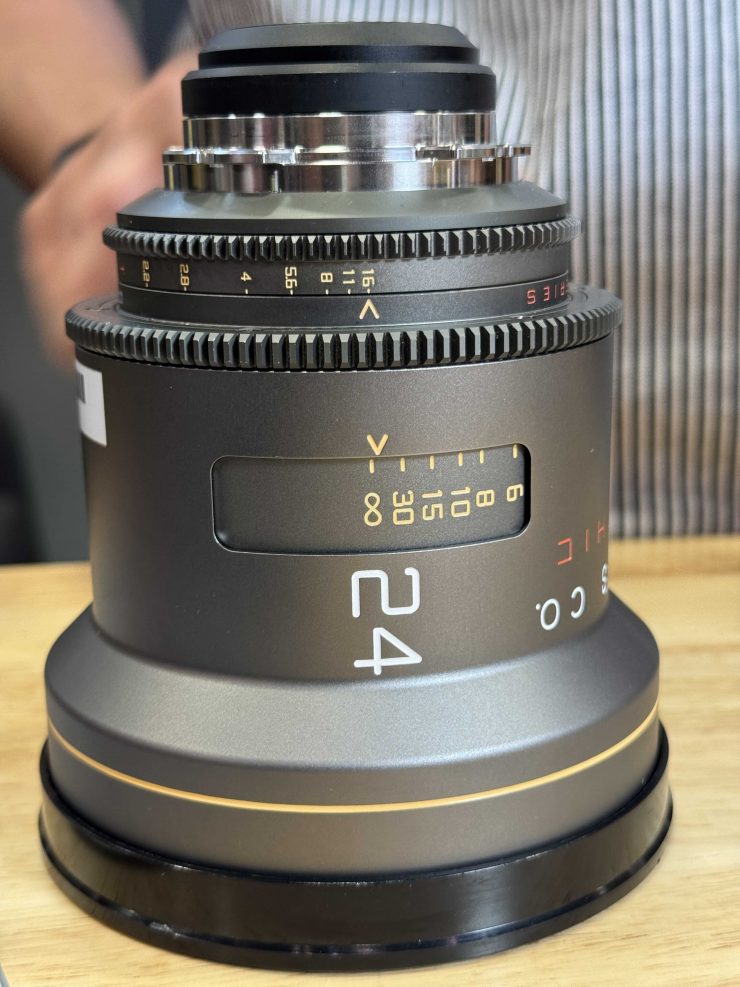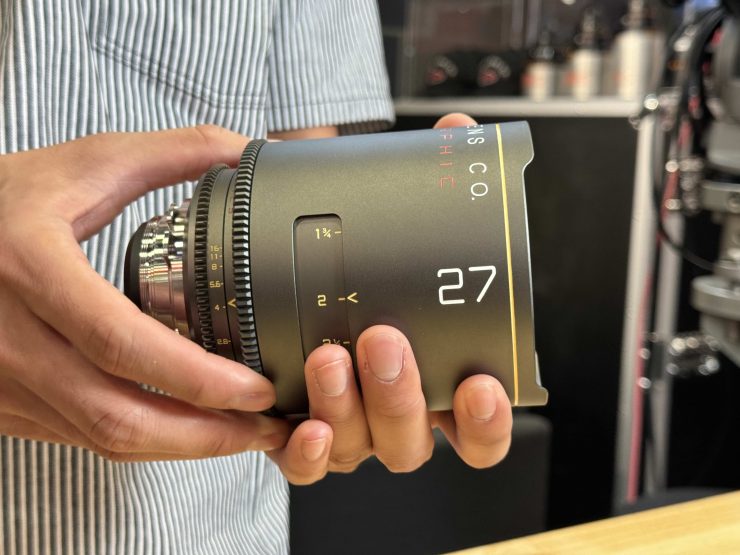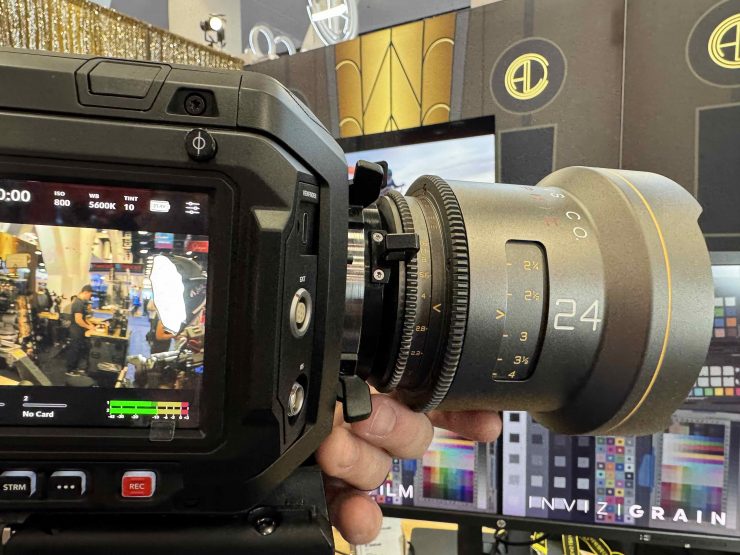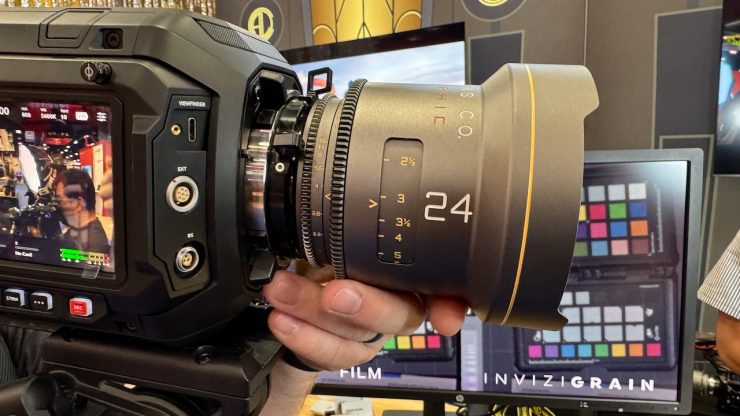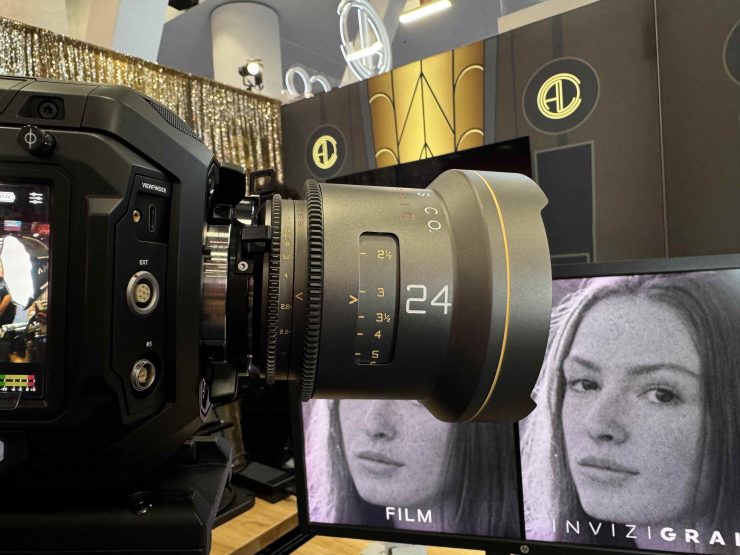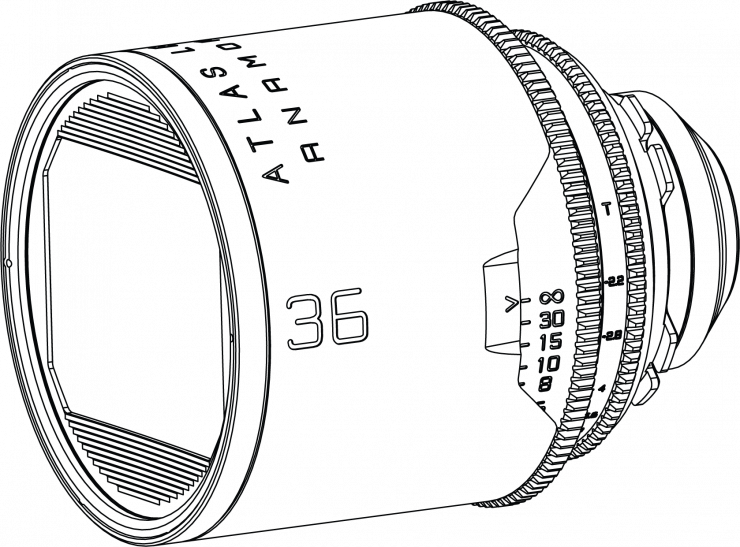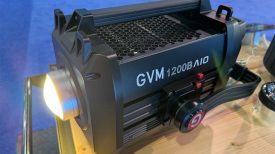Atlas Lens Co. was showing its latest additions to the Mercury 1.5x series at NAB 2025 in Las Vegas. The 24mm T2.2, 27mm T2.2, and 32mm T2.2 are all part of the Mercury Group 3, a series of wide-angle primes.
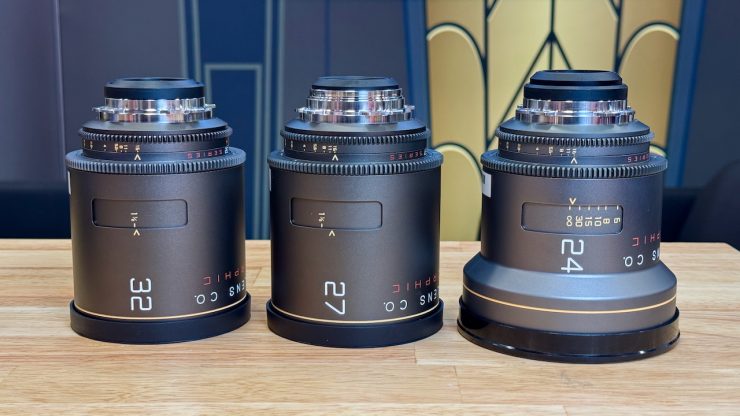
The new focal lengths are compatible with film and digital sensors, and they have a larger than full frame image circle.
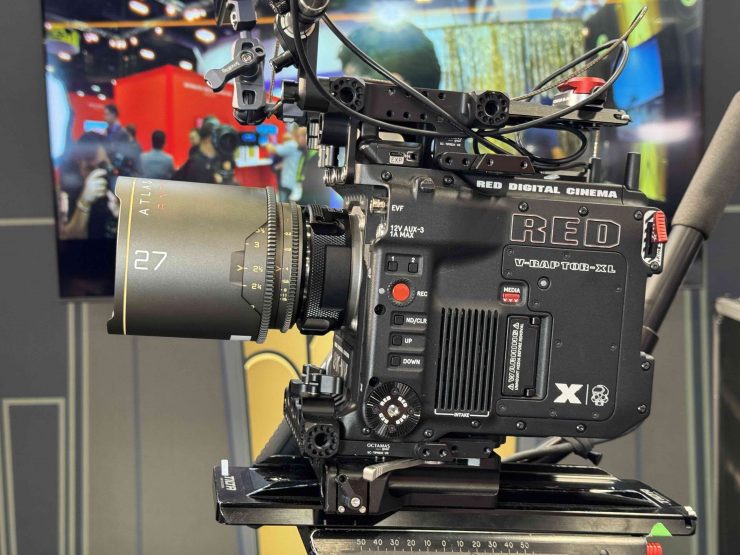
Atlan Lens Co. told me that the 27mm has lower breathing than the 36mm Mercury.
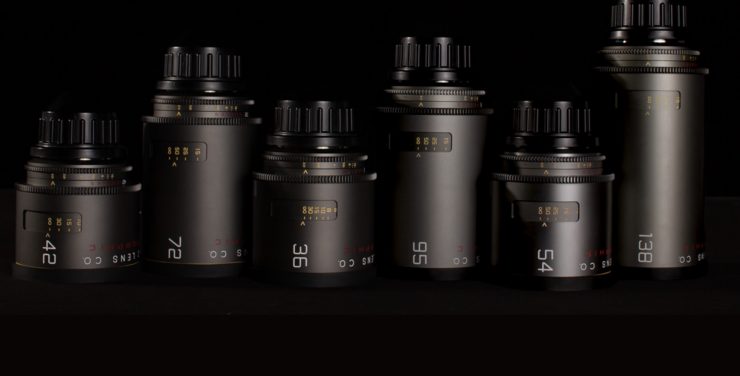
The Mercury Series currently consists of the 24mm, 27mm, 32mm, 36mm, 42mm, 54mm, 72mm, 95mm, and 138mm. The new lenses will make a total of 9 focal lengths that range from 24mm all the way up to 138mm.
Atlas Lens Co. announced its new Mercury Full Frame 1.5x Front Anamorphic Lenses back in September 2022.
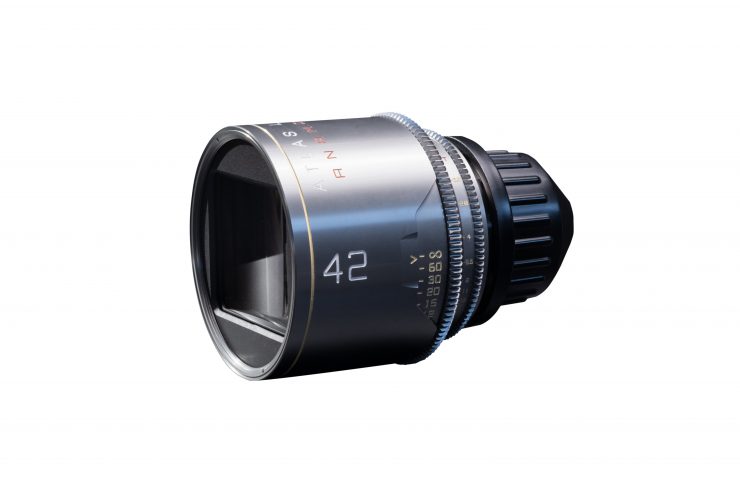
The Mercury Series features full-frame coverage, a 1.5x squeeze ratio with enhanced bokeh, a significant reduction in physical size and weight, a more dynamic geometric optical personality, and warmer vintage tones than the Atlas Orion Series. They also provide the same modern, mechanical conveniences that cinematographers expect.
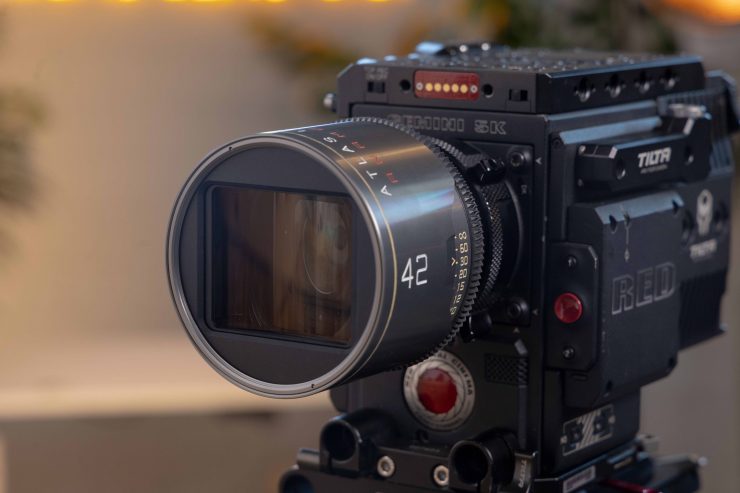
The lenses cover an imaging area of 36.7mm x 25.54mm as well as 16:9 / 3:2 / 4:3 sensors, with easy delivery to 2:1 / 2.25:1 / 2.66:1 / 2.4:1.
Above you can see quite a few short videos where the lenses were used.
Back in 2022, I did a 20-minute-long interview with Atlas Lens Co. founders Dan Kanes, CEO, and Forrest Schultz, President and lead designer about their new Mercury series which you can listen to above. This interview provides some fascinating insight into why they chose to go with 1.5x instead of 1.8x or 2x, and the complexities of lens design.
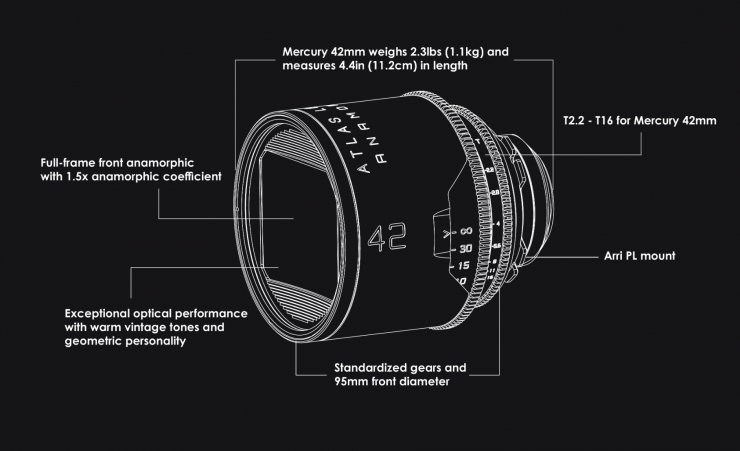
Key features
- Full-frame sensor coverage with 1.5x anamorphic coefficient
- Aperture of T2.2 – T2.3 for Mercury Series
- 78° horizontal field-of-view
- 2.0ft / 0.56m close focus
- Exceptional optical performance with vintage geometric personality
- Golden streak flares, pleasing barrel distortion, near-zero chromatic aberration
- Lightweight and compact: Half the size and weight of most pro anamorphic lenses
- Arri PL mount for use on professional cinema cameras and mirrorless cameras via pl adapter
- Standardized gears and diameters with 95mm front diameter
Atlas Lens Co. really wanted to push the boundaries of the Mercury Series in optical and product design, by balancing vintage character with modern sensor performance. The image Mercury produces provides classic anamorphic barrel distortion, smooth bokeh transitions, and a pleasant separation of foreground and background objects.
Why 1.5x?

Some readers may be asking why 1.5x? Well, I reached out to Atlas Lens Co. to ask them why they chose to make the new Mercury lenses with a 1.5x squeeze and not 1.8x or 2x. Here is what they told me:
The biggest reason for the 1.5x is that it provides two major things:
(1) It easily supports multiple delivery aspects
(2) It preserves many classic 2x anamorphic characteristics (oblong oval bokeh, barrel distortion, shallow depth of field) while allowing us to design a lens that is half the size and weight of most pro anamorphic lenses.
A 1.5x squeeze design allows manufacturers to balance the anamorphic characters as well as the resolution of the image. The 1.5x squeeze can produce a cinematic widescreen 2.39:1 aspect when paired up with 4:3 sensors. When paired up with 16:9 sensors, much less data (than 2X anamorphic lens) is needed to be cropped away to create the desired 2.39:1 ratio.
In a lot of ways, the decision to go with a 1.5x anamorphic makes a lot more sense than going with a 2x. 1.5x is more versatile and it allows the lens to be used on more cameras. Making a 1.5x anamorphic is also a lot easier than creating a 1.8x or 2x anamorphic.
It is interesting to see how many anamorphic lenses are now coming out with 1.5x and 1.8x squeeze and not a traditional 2x.
Other Features
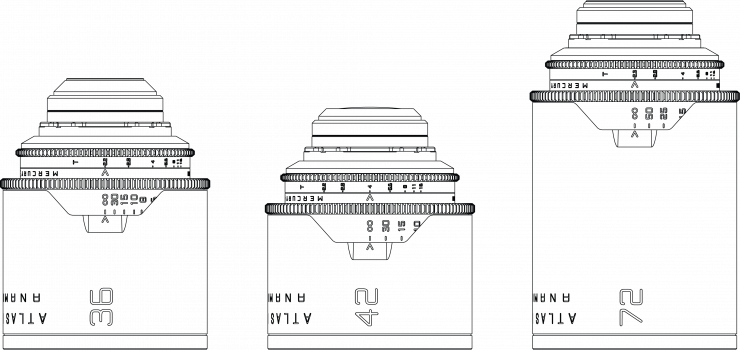
The lenses were designed to be versatile and easy to use. They feature a robust, reliable mechanical design and they all come standard with an Arri PL mount. This allows them to be used on professional cinema cameras as well as any mirrorless prosumer camera via a PL adapter.
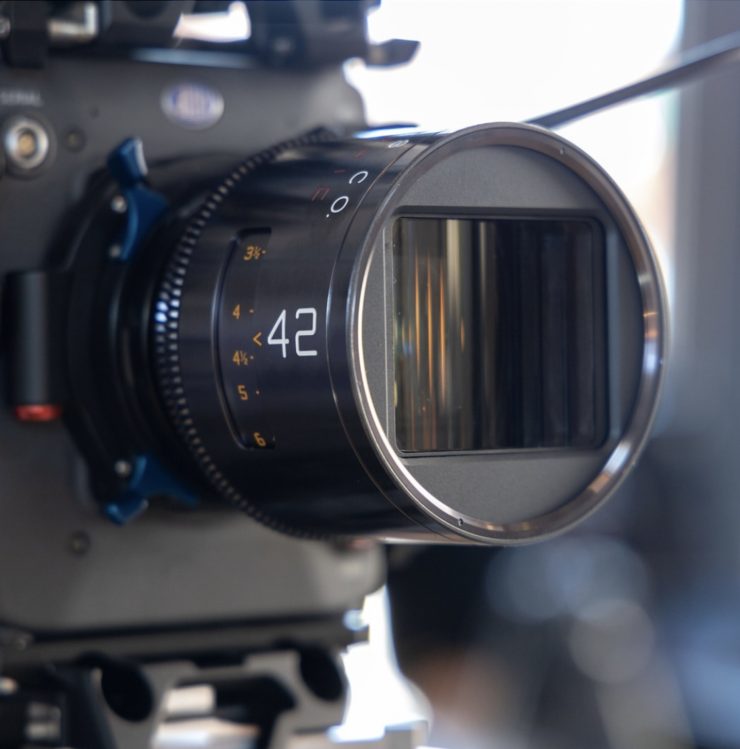
The Mercury series feature a 14-blade iris, and all elements are glass (no plastics are used). The lens body is coated in scratch-resistant anodized aluminum.
All the lenses in the series feature a unified focus and iris position and industry-standard 0.8 pitch gears. They also all share a 95mm outer diameter, which allows for native use with various matte boxes and filters.

